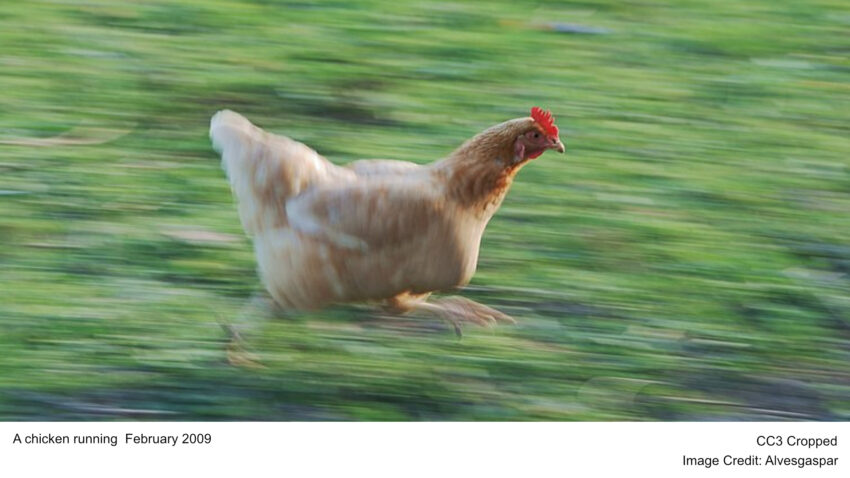The Louisiana Department of Health initially reported the case, highlighting the severity of the infection. Experts say this is the first hospitalization for H5N1 in the U.S. this year. While 61 human cases have been reported nationwide, most have been mild and associated with workers on dairy or poultry farms (see list of severe outbreaks over the past 50 years). This case, unlike others, involves a backyard flock, indicating a potential shift in exposure dynamics.
- The U.S. reported its first hospitalization for H5N1 in 2024, linked to a backyard flock, highlighting a potential shift in exposure risks. Most of the 61 U.S. cases this year have been mild and tied to poultry or dairy farms.
- The CDC reassures the public that the risk of widespread human transmission is low but stresses vigilance due to increasing infections in birds and mammals.
- The USDA has begun H5N1 testing in dairy cows across 13 states and is conducting field trials for bovine vaccines, indicating a proactive response to mitigate risks.
- Labcorp’s newly available human H5 bird flu test is expected to bolster diagnostic accuracy and enhance outbreak management efforts.
The CDC maintains that the risk to the general population remains low. However, Demetre Daskalakis, director of the CDC’s National Center for Immunization and Respiratory Diseases, emphasizes the need for continued vigilance. The widespread infection in birds and mammals raises concerns about potential human infections and the virus’s ability to adapt for human-to-human transmission.
In response to the growing threat, the U.S. Department of Agriculture (USDA) initiated bulk milk testing for H5N1 in dairy cows across 13 states. This testing will expand as resources allow. Eric Deeble, the USDA’s deputy under secretary for marketing and regulatory programs, announced ongoing field trials for bovine H5N1 vaccines.
Additionally, Labcorp has introduced a human H5 bird flu test available to physicians. This development promises to enhance diagnostic capabilities and improve response efforts. Despite these measures, experts urge those with close contact with birds to take precautions to minimize their risk.
Bird Flu Outbreaks over the past 50 years
Over the past 50 years, the United States has experienced several significant outbreaks of avian influenza (bird flu), primarily affecting poultry and wild bird populations. Human infections have been rare, with limited hospitalizations and fatalities. Notable outbreaks include:
1983–1984 Outbreak:
- Details: A highly pathogenic avian influenza (HPAI) H5N2 outbreak led to the culling of approximately 17 million birds in Pennsylvania and surrounding states to control the spread.
- Human Impact: No reported human infections.
2002–2003 Outbreak:
- Details: An H7N2 low pathogenic avian influenza (LPAI) outbreak affected poultry in the northeastern U.S.
- Human Impact: One confirmed human infection in Virginia, resulting in mild illness.
2014–2015 Outbreak:
- Details: The largest HPAI outbreak in U.S. history, involving H5N2 and H5N8 strains, led to the loss of over 50 million birds across 21 states.
- Human Impact: No confirmed human infections.
2022–Present Outbreak:
- Details: An ongoing HPAI H5N1 outbreak has affected wild birds, poultry, and, notably, dairy cattle in the U.S.
- Human Impact: As of December 2024, 61 human cases have been reported across eight states, primarily among individuals with direct contact with infected animals. Most cases have been mild, but the first severe case was confirmed in Louisiana, involving a 65-year-old man hospitalized in critical condition.
It’s important to note that human infections with avian influenza viruses in the U.S. have been rare, and severe cases even rarer. The Centers for Disease Control and Prevention (CDC) continues to monitor the situation closely.
bird flu (avian influenza) has primarily been a disease affecting birds, with significant economic and ecological impacts on poultry and wild bird populations. Human infections are exceedingly rare, and widespread human-to-human transmission has not been observed. Here’s a breakdown of the situation:
Why Bird Flu Rarely Affects Humans:
- Transmission Barrier: Most avian influenza viruses are not well-adapted to infect humans. They are primarily transmitted through direct contact with infected birds or their droppings.
- Limited Human Cases: In the U.S., human cases have been rare and typically occurred in individuals with prolonged and close exposure to infected poultry or contaminated environments.
- Mild Symptoms: When humans are infected, symptoms are often mild, such as conjunctivitis or flu-like symptoms. Severe cases have been extremely rare.
- Low Risk of Human-to-Human Transmission: There has been no sustained human-to-human transmission, which significantly reduces the public health impact compared to other influenza strains like seasonal flu.
Global Context:
Certain strains, like H5N1, H7N9, and H5N6, have caused sporadic human infections globally. Severe cases and fatalities have been reported, especially in Asia, but these are isolated incidents rather than widespread outbreaks.
U.S. Context:
- The largest outbreaks (1983–1984, 2014–2015, and 2022–present) had little to no human health impact in the U.S.
- The 2022–present outbreak marked the first significant detection of avian flu in mammals like sea lions and domestic cats, raising concerns about potential adaptation but not widespread human health risks.
Monitoring and Preparedness:
Public health agencies, such as the CDC and WHO, actively monitor avian flu outbreaks for any signs of genetic changes that might enable the virus to spread more easily among humans. The focus remains on controlling outbreaks in bird populations to minimize any spillover risk to humans.
While bird flu has a devastating impact on birds and agriculture, the risk to humans has historically been very low in the United States.

